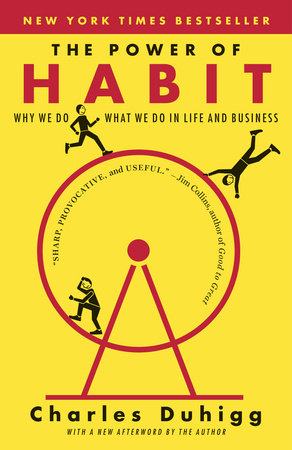Book Review: The Power of Habit
“I want to talk to you about worker safety”
What CEO in the world starts his very first speech right on point?
Unlike any other CEO in the history of the company, Paul O’ Neill didn’t bother sparing some nice words out of formality about the place, the extravagant people, or the weather!
This was his very first address to the room bustling with Alcoa staff, all waiting to hear a fancy speech and getting nothing close to that.
Investors were nervous and the senior leadership was not too sure of what was going on. On paper, O’Neill looked the best that Alcoa could have, but reality didn’t quite seem like it.
In his 13 years of leadership however, Alcoa went from 1.86 lost work days per 100 workers to 0.2, something later discovered, was one of the leading cause for the drop in productivity in the factory.
The worker safety campaign at Alcoa, one of the largest Aluminium companies in the world, was more than just a romanticised idea of a newly appointed CEO.
Author Duhigg argues that O’Neill unknowingly created those keystone habits at Alcoa that he defines as the habits “that create culture where new values are ingrained”.
Setting up a Core Philosophy
When he joined Alcoa as the CEO in 1987, he had a list of things he wanted to achieve, and on the top of the list he wrote “WORKER SAFETY” in bold letters.
Before confirming his response to Alcoa’s offer, Neill did his homework on the company, and found out one defining problem of the company: The conflicts that often take place between the executives and the unions of the Alcoa plants, some even range into violent worker outbursts. He had to find one way to solve it win-win.
Unions focused on the well being of the worker, managers were more focused on extracting more productivity. When it was told that the company will be “People Driven” from now on, the issues unions have been fighting for became the new targets for the managers to achieve. In return, the unions stayed stable, and so did the productivity graph.
With the “Zero Injuries” target, the executives now needed to trace how injuries happened at the plant and for that they needed to understand the entire manufacturing process of the company, recruit teams that could train employees and workers on quality control and efficiency.
Integrating Systems of Speedy Reporting
All unit presidents needed to report accidents directly to O’Neill within 24 hours with a plan to prevent it in future. For that they needed to hear from their Vice Presidents immedietly after any accident happened and for that the Vice Presidents needed to be in constant communication with floor managers. The floor managers in turn would warn the workers to report even the smallest of accidents.
This was still not enough. It was impossible to come up with plans within the 24hrs deadline, and so the Vice Presidents installed idea boxes and asked the workers to tell them what could be done.
Cultivating People Over Professionals
Many executives reported scolding strangers when they saw they weren’t wearing the safety equipment at work site. Many even couldn’t help but file complaints and even lecture others on it, even during vacations.
One worker at one of the Alcoa factories died of an injury that crashed his skull. Within few hours Neill brought in every single managerial staff in one room and made them redesign the accident scene, and asked them to identify what might have caused the accident. For hours there were discussions and multiple models were drawn that defined every single way that potentially could have caused the accident.
“He didn’t die. We killed him.” said O’Neill, and that day, everyone at the room realised 2 things: first, that their crazy CEO was not really inventing policies to please his insanity, but he meant it from the deep down of his heart, enough to accept responsibility for someone’s death, second, that this whole worker safety idea had far real implications than what it seemed from the head quarters. This was more than a policy.
This was something that could save real human lives, or end them.
Creating a Culture of Listening
Within a week of that meeting, new policies were written and managers asked employees to suggest what could be done to proactively tackle such occurrences. The worker died for his attempt to fix a broken machine on his own. Rules were clarified to make sure no one attempts such unsafe repairs, and everyone was asked to keep an eye on those who even tried to do such things out of humor.
Vigilance was widespread, plans were written ahead, line managers asked workers to come up with safety measure ideas that could prevent accidents.
Previously tragic accidents were something that was barely talked about, but now more discussions were encouraged after each minor accidents.
To discuss safety issues more promptly, Alcoa developed one of the first genuinely worldwide corporate email systems.
O’Neill could see the win. The numbers were dropping. He issued a memo throughout the organisation: “We should not celebrate because we’ve followed the rules or brought down a number. We should celebrate because we are saving lives.”
Workers made copies of the note and pasted it in their lockers. Someone even painted a Mural of O’Neill with the quote underneath.
Alcoa still lives by the O’Neill legacy. In 2010, 82% of Aloca lovations didn’t lose one employee day due to injury, close to an all time high.
This is just the simplified version of the chapter: Keystone Habits, or The Ballad of Paul O’Neill. The next one would be another magnificent case study on Starbucks.
Subscribe to stay posted!
